This article was co-authored by Mark Co, DPM. Dr. Mark Co is a Podiatrist who runs his own private practice in San Francisco, California. Dr. Co specializes in treatments for bunions, ingrown toenails, toenail fungus, warts, plantar fasciitis and other causes of foot pain. He also offers custom orthotics for the treatment and prevention of foot and ankle issues. Dr. Co completed a Master of Business Administration (MBA) at New York University and an MA in Electrical Engineering and Computer Science at Johns Hopkins University. Dr. Co also completed his DPM at the California School of Podiatric Medicine and a residency and internship at the Kaiser Permanente Medical Center, Santa Clara, California. Dr. Co was awarded San Francisco's "Top 3 Podiatrists" in 2018, 2019, and 2020. Dr. Co is also a member of the CPMA (American Podiatric Medical Association).
There are 15 references cited in this article, which can be found at the bottom of the page.
wikiHow marks an article as reader-approved once it receives enough positive feedback. In this case, 96% of readers who voted found the article helpful, earning it our reader-approved status.
This article has been viewed 1,518,066 times.
Nail fungus, or onychomycosis, is a common skin condition where a fungus infects a part of the nail including the bed, matrix, or plate.[1] Nail fungus can result in cosmetic concerns, pain, and discomfort as well as end up affecting your everyday activities. If it is a severe infection, it may cause permanent damage to your nails or may spread beyond your nails.[2] If you know you have toenail fungus, you can follow a few simple steps to get rid of it and return your toenail to its former health.
Steps
Treating Toenail Fungus Medically
-
1Recognize the signs. Before you can treat toenail fungus, you need to know what to look for. Nail fungus does not necessarily have consistent symptoms. The most common sign that you have nail fungus is tenderness or pain in the nail. Signs of a fungal infection include thickened, discolored, or brittle nails.[3] The nail will usually get yellow or white streaks on the side of the nail. There is usually due to a buildup of debris under or around the nail, a crumbling and thickening of the outside edges of the nail, a loosening or lifting up of the nail, and nail brittleness.[4]
- Although treatment is usually sought for cosmetic reasons, nail fungus can be serious and should be treated. For example, if it is a severe infection, it can cause permanent damage to your nails. The infection can also spread beyond your nails, especially if you are in a high risk group, such as people with diabetes or impaired immune systems. High-risk people can develop cellulitis, a skin tissue infection, if toe fungus isn't treated.[5]
- Toenail fungus is caused by fungi such as trichophyton rubrum. It is also caused by non-dermatophyte molds and yeast, most commonly from the Candida species.[6]
-
2Don't use over the counter options. Nail fungus is hard to treat and repeat infections are very common. Contrary to common belief, over the counter antifungal creams are usually for athlete's foot and do not effectively treat toenail fungus. This is because they cannot penetrate the nail.[7]Advertisement
-
3Take oral medication. The most effective way to get rid of nail fungus is systemic treatment with oral prescription antifungals. Treatment with oral medications can take 2-3 months or longer. Oral antifungal prescription medications include Lamisil, which is usually prescribed with a dose of 250 mg a day for 12 weeks. Side effects can include rash, diarrhea, or liver enzyme abnormalities. This medication should not be used if you have liver or kidney issues.
- You can also try itraconazole (Sporanox), which is usually prescribed with a dose of 200 mg a day for 12 weeks. Side effects can include nausea, rash, or liver enzyme abnormalities. It should not be used if you have liver issues. Sporanox also has interactions with over 170 different drugs such as Vicodin and Prograf. Check with your doctor to ensure any medication you are taking does not interfere with it.[8]
- Before getting any prescription, tell your doctor if you have liver disease, a history of depression, a weak immune system, or an autoimmune disorder. These medications may cause liver toxicity.
-
4Try topical antifungal prescription medications. Topical medications are not recommended alone, but they can be used in addition to oral therapy to decrease the duration of your treatment. However, if you have reservations about oral therapy or are hesitant to start long-term oral therapy, topical medications are a good option.
- You can try Ciclopirox, which is an 8% solution is usually applied daily for 48 weeks.[9]
- You can also try the more recent medication Jublia, which is a 10% solution that is also applied daily for 48 weeks.
- Topical prescriptions may be effective if the infection does not involve the nail matrix, the layer of cells at the base of the nail. Your doctor will let you know if your infection has expanded to include the nail matrix.
-
5Talk to your doctor about surgical treatment. If you have a severe case of toenail fungus, you may need to have surgery to fix it. The options include partial or complete nail removal. After the infected nail is surgically removed, antifungal cream is applied to the area to prevent reinfection of the new nail.
- Total nail removal is not commonly needed.[10]
-
6Consider non-pharmacological, non-surgical treatment. These methods don't require you to take drugs or get surgery. These include nail debridement, which is the removal of dead or infected tissue and trimming of the nail. This option is used for severe infections or for infections that cause abnormal growths.
- Generally doctors apply urea ointment and cover it with a dressing. This softens the nail over a period of 7-10 days after which the doctor can easily remove the diseased portion of the nail. It is usually a painless procedure.[11]
-
7Try laser treatment. Laser treatment options are available but are generally very costly. They use a high focus beam to eradicate the fungus in the affected area. It can take several treatments to clear the infection, which means you have to pay even more each time you go.[12]
- This treatment is still largely experimental. Until further studies are conducted, laser treatment is not recommended for routine use.
Using Alternative Treatment Options
-
1Apply Vick's VapoRub. You can get over the counter vapor rub from Vick's to help your fungus. A study showed that daily application of Vick's VapoRub for 48 weeks might be as effective as topical treatment options such as Ciclopirox 8% for nail fungus.[13] To treat nail fungus with Vick's VapoRub, first make sure your nail is clean and dry. Apply a small amount of Vick's VapoRub on the affected area daily with your finger or a cotton swab, preferably at night. Continue treatment for up to 48 weeks. Keep in mind that just one study supported the use of Vick's VapoRub for onychomycosis, more research needs to be done to determine whether it is safe and effective.[14]
- Your infection may go away before 48 weeks, but continue for a few weeks after signs of your infection go away to ensure it is cured.
-
2Use tea tree oil. Tea tree oil is a natural anti-fungal. One study showed that tea tree oil may be effective for nail fungus. 18% of patients who used tea tree oil twice daily for 24 weeks were cleared of the infection.[15] Although some studies support the use of tea tree oil for onychomycosis, more research needs to be done to determine whether it is safe and effective.[16]
- Make sure your nail is clean and dry before application. Apply a small amount tea tree oil solution with a cotton swab to affected area twice a day for up to 6 months.
-
3Try snakeroot leaf extract. In one study of 110 people, snakeroot extract may have been about as effective as topical treatment options. To use this method, apply the extract every third day for 4 weeks, twice a week for the next 4 weeks, then once a week for the next 4 weeks. [17]
-
4Prevent future occurrences. There are many situations that make you more at risk for infection. You are at a higher risk if you are older, have diabetes, have an impaired immune system, or have poor circulation. If you are at high risk, you should take extra care to prevent infection. Preventative measures include wearing shoes or sandals when you are at damp public areas such as swimming pools or gyms, keeping your toenails clipped and clean, making sure your feet are dry, and drying your feet after you shower.
- You should wear clean, absorbent socks. Wool, nylon, and polypropylene are materials that help keep your feet dry. You should also change your socks often.
- You should discard old shoes after you get rid of your fungus. They can contain remnants of the fungi. You can also wear open toe shoes to help reduce moisture.
- Do not share nail clippers or tools used for manicures and pedicures. Choose nail salons carefully.
- Use antifungal powder or spray to help reduce your chances of infection.
- Avoid wearing nail polish or using artificial products on your nails. This can trap moisture and provide a damp area for fungus to grow.
Expert Q&A
Did you know you can get premium answers for this article?
Unlock premium answers by supporting wikiHow
-
QuestionHow can I treat discoloration on my nail?
 Chris M. Matsko, MDDr. Chris M. Matsko is a retired physician based in Pittsburgh, Pennsylvania. With over 25 years of medical research experience, Dr. Matsko was awarded the Pittsburgh Cornell University Leadership Award for Excellence. He holds a BS in Nutritional Science from Cornell University and an MD from the Temple University School of Medicine in 2007. Dr. Matsko earned a Research Writing Certification from the American Medical Writers Association (AMWA) in 2016 and a Medical Writing & Editing Certification from the University of Chicago in 2017.
Chris M. Matsko, MDDr. Chris M. Matsko is a retired physician based in Pittsburgh, Pennsylvania. With over 25 years of medical research experience, Dr. Matsko was awarded the Pittsburgh Cornell University Leadership Award for Excellence. He holds a BS in Nutritional Science from Cornell University and an MD from the Temple University School of Medicine in 2007. Dr. Matsko earned a Research Writing Certification from the American Medical Writers Association (AMWA) in 2016 and a Medical Writing & Editing Certification from the University of Chicago in 2017.
Family Medicine Physician
-
QuestionAt what point should I see a doctor if I have toe fungus?
 Mark Co, DPMDr. Mark Co is a Podiatrist who runs his own private practice in San Francisco, California. Dr. Co specializes in treatments for bunions, ingrown toenails, toenail fungus, warts, plantar fasciitis and other causes of foot pain. He also offers custom orthotics for the treatment and prevention of foot and ankle issues. Dr. Co completed a Master of Business Administration (MBA) at New York University and an MA in Electrical Engineering and Computer Science at Johns Hopkins University. Dr. Co also completed his DPM at the California School of Podiatric Medicine and a residency and internship at the Kaiser Permanente Medical Center, Santa Clara, California. Dr. Co was awarded San Francisco's "Top 3 Podiatrists" in 2018, 2019, and 2020. Dr. Co is also a member of the CPMA (American Podiatric Medical Association).
Mark Co, DPMDr. Mark Co is a Podiatrist who runs his own private practice in San Francisco, California. Dr. Co specializes in treatments for bunions, ingrown toenails, toenail fungus, warts, plantar fasciitis and other causes of foot pain. He also offers custom orthotics for the treatment and prevention of foot and ankle issues. Dr. Co completed a Master of Business Administration (MBA) at New York University and an MA in Electrical Engineering and Computer Science at Johns Hopkins University. Dr. Co also completed his DPM at the California School of Podiatric Medicine and a residency and internship at the Kaiser Permanente Medical Center, Santa Clara, California. Dr. Co was awarded San Francisco's "Top 3 Podiatrists" in 2018, 2019, and 2020. Dr. Co is also a member of the CPMA (American Podiatric Medical Association).
Podiatrist
Warnings
- Make sure to call your doctor if you have fungal nail infections that do not go away or if the areas around the infection become painful, red, or have pus in them.⧼thumbs_response⧽
- If you have other health conditions such as diabetes, toenail fungus can cause more serious complications such as cellulitis, which is a bacterial infection of the skin.⧼thumbs_response⧽
- Many insurance companies consider toenail fungus treatment to be a cosmetic procedure, so you may need to check whether your treatment would be covered.[21]⧼thumbs_response⧽
References
- ↑ https://www.aafp.org/afp/2001/0215/p663.html
- ↑ http://www.mayoclinic.org/diseases-conditions/nail-fungus/basics/definition/con-20019319
- ↑ Mark Co, DPM. Podiatrist. Expert Interview. 21 April 2020.
- ↑ http://www.nlm.nih.gov/medlineplus/ency/article/001330.htm
- ↑ http://www.nhs.uk/Conditions/Cellulitis/Pages/Causes.aspx
- ↑ https://www.aafp.org/afp/2001/0215/p663.html
- ↑ http://health.clevelandclinic.org/2014/09/how-you-can-stop-foot-and-toe-fungus-in-its-tracks/
- ↑ http://www.aafp.org/afp/2001/0215/p663.html
- ↑ https://www.nlm.nih.gov/medlineplus/druginfo/meds/a604021.html
- ↑ https://www.aad.org/public/diseases/a-z/nail-fungus-treatment
- ↑ http://www.webmd.com/skin-problems-and-treatments/nonsurgical-nail-removal-for-fungal-nail-infections
- ↑ https://www.aad.org/public/diseases/a-z/nail-fungus-treatment
- ↑ Derby R, Rohal P, Jackson C, et al. Novel treatment of onychomycosis using over-the-counter mentholated ointment: a clinical case series. J Am Board Fam Med 2011; 24:69.
- ↑ https://www.aafp.org/afp/2013/1201/p762.html
- ↑ Buck DS, Nidorf DM, Addino JG. Comparison of two topical preparations for the treatment of onychomycosis: Melaleuca alternifolia (tea tree) oil and clotrimazole. J Fam Pract. 1994;38(6):601-605.
- ↑ https://www.aafp.org/afp/2013/1201/p762.html
- ↑ https://www.aafp.org/afp/2013/1201/p762.html
- ↑ http://www.aafp.org/afp/2013/1201/p762.html
- ↑ http://www.mayoclinic.org/diseases-conditions/nail-fungus/basics/alternative-medicine/con-20019319
- ↑ Mark Co, DPM. Podiatrist. Expert Interview. 21 April 2020.
- ↑ Mark Co, DPM. Podiatrist. Expert Interview. 21 April 2020.
About This Article
To get rid of toe fungus, apply 100% tea tree oil to the affected area with a cotton swab twice a day. You can also try applying Vick's VapoRub to your toe every night before you go to sleep, which may make the fungus go away. Another home remedy you can try is snakeroot leaf extract, which may clear up the fungus if you apply it to the affected area every 3 days. If home remedies aren't helping, talk to your doctor about getting an oral or topical antifungal medication. To learn more from our Physician co-author, like what surgical treatments you can consider, keep reading the article!
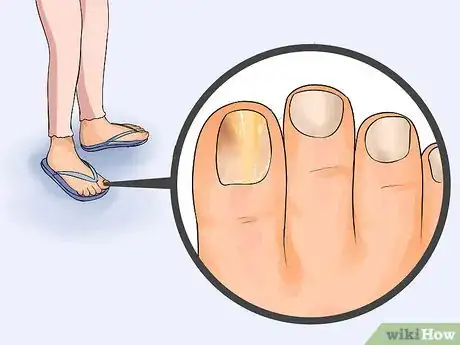

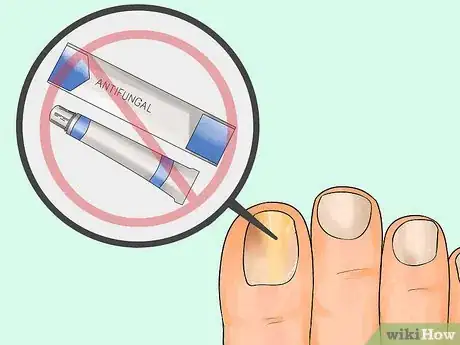
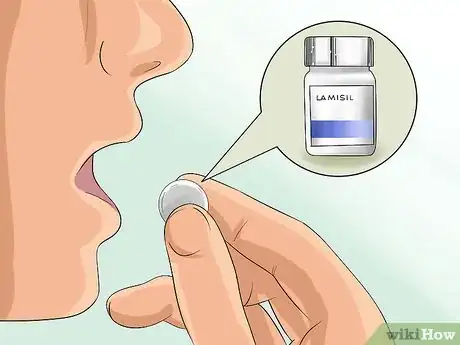
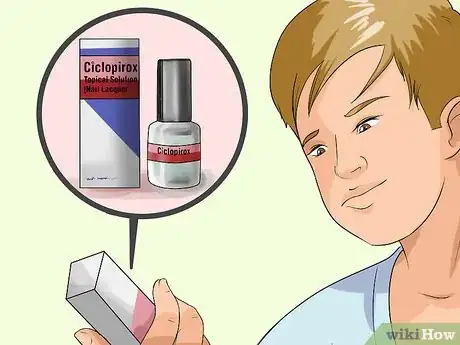


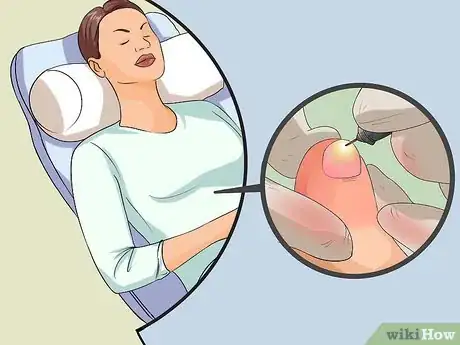
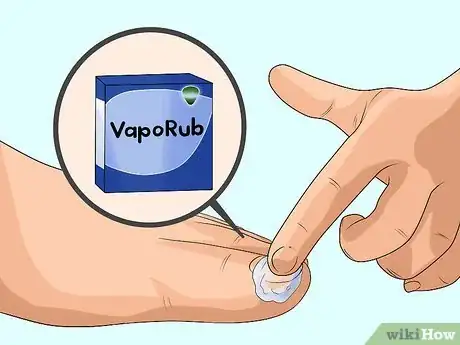
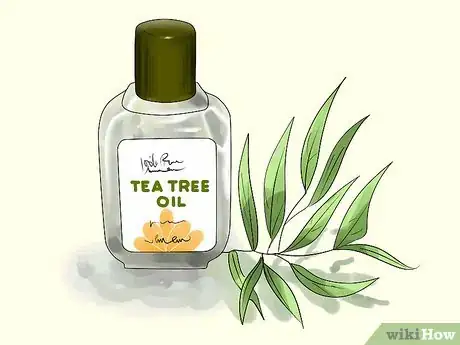
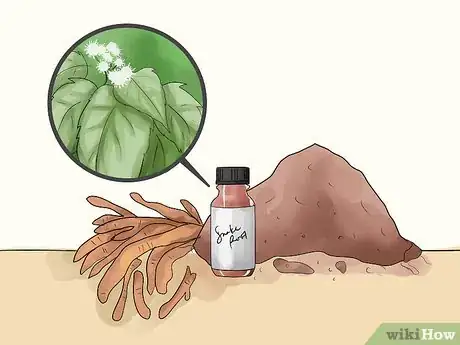


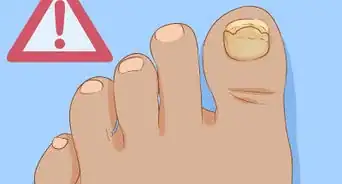
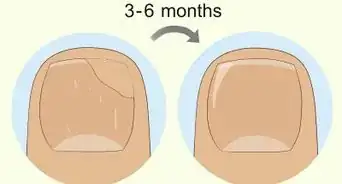
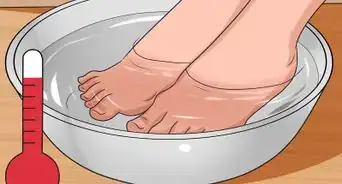
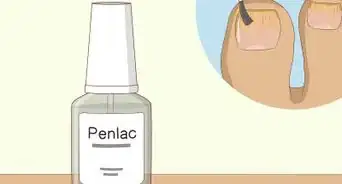
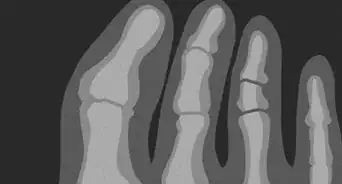
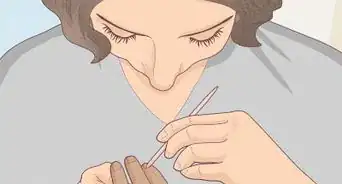
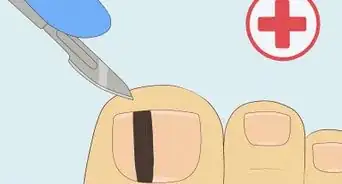
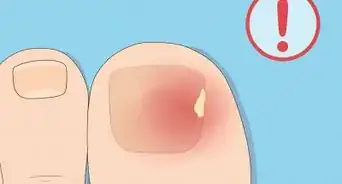
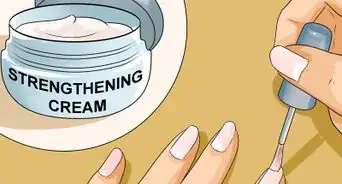

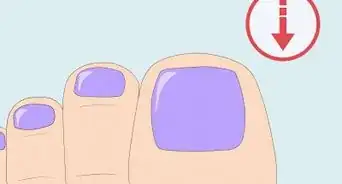











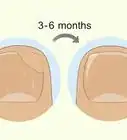




































Medical Disclaimer
The content of this article is not intended to be a substitute for professional medical advice, examination, diagnosis, or treatment. You should always contact your doctor or other qualified healthcare professional before starting, changing, or stopping any kind of health treatment.
Read More...